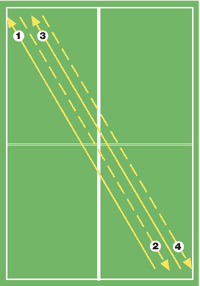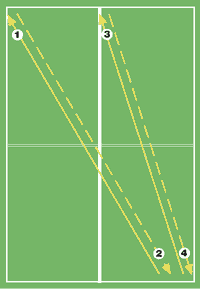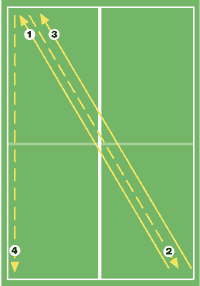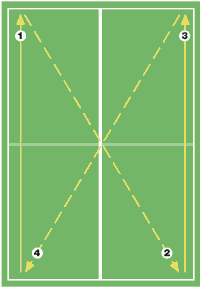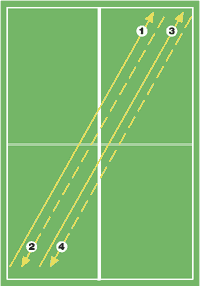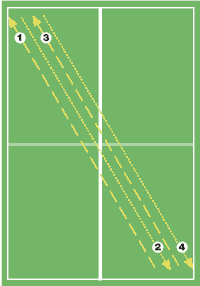|
|
||||||||||||||
|
|
||||||||||||||
|
|
EXERCISES FOR CHANGE OF RHYTHMNikola Vukelja There are many players who can hardly change within one point from active into passive game and vice versa, and/or who have difficulties in changing the game rhythm, and usually have problems with players who are good at it. Although I strongly believe that the feeling for rhythm as a motoric ability is mostly defined by genetic factor, we shall try to elaborate sequence of exercises, which can, at least somewhat, influence the development of this ability, which is very important for table tennis. Sequence of exercises which is in practice called ‘two topspins two blocks’ and which is primarily used for the development of this motoric ability, is a component part of one of up to four trainings in a week depending on practice goals. We usually perform these exercises at the beginning of the training session, immediately after the basic warm up at the table and on average they last about an hour. As with these exercises ‘both players work’ and/or within one point they alternatively change the passive and active game, exercises are physically rather strenuous, therefore it is recommended to give the players after each exercise a short break (1 or 2 min), and at the end of each complex of exercises a 10 minutes pause. In principle the duration of each exercises is about 10 minutes, but exercises can be shorter or longer depending on the player’s needs. This principle of composing the exercises gives a coach possibility for various combinations, depending on the type of a player. We shall demonstrate here one typical set of exercises intended for the offensive spin players.
It should be emphasized that a prime task of such exercise sequence is the development of feeling for rhythm change, but the exercises may be used for some other reasons too, e.g. footwork exercise whether we wish to improve forward - backward movement, or left - right movement, and for some other goals as well. In principle these exercises are very important for players, and they should perform them with pleasure and concentration, so that they can be used both in everyday trainings and in camp trainings as well. Source : Tibhar |
|||||||||||||
|
Last Update : 06 November, 2002 Copyright © 2001-2006 Ertan Patir Webmaster : |

